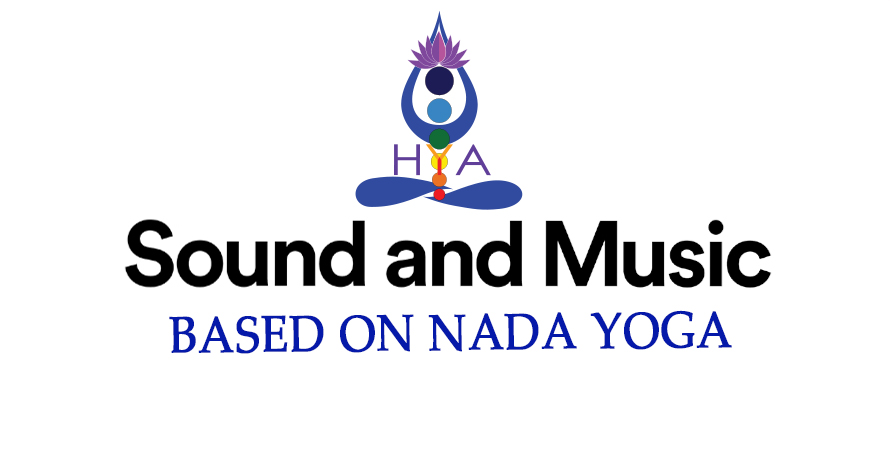
20 Sep 2023 HYN Himalayan Yoga Academy
What is Sound?
Sound is pure energy, it is a motion, a vibration. Entire existence is created because of Sound. There are eternal and external sounds, normally external sound is related to movement and creates an electromagnetic field. Healing is done through sound in the waves of the electromagnetic field. Sound or nothing, the manifest part of the One Cognizant Energy, called Brahman, swarms each iota and atom of presence. It is seen by the psyche, consumed by the feeling of hearing, and communicated by the tongue.
Sound has four levels — conventional, mental, ghostly, and supernatural, each having an attractive power field of energy. The brain is drawn to various vibrations of sound, at various degrees, not entirely settled by time, climate, temperament, milieu, real changes, past karma, and so forth. Sound influences sentiments, feelings, conduct, and activities according to its recurrence, plentifulness, or heading.
A mix of sounds that inspire feeling is an art. Perception and trial and error on the design and different parts of sound in the actual world is science. Contemplation on the internal sound is otherworldliness. Nada Anusandhana is an examination of the wellspring of sound that lies somewhere down in our cosmos.
Sound is the offspring of movement – consonant, direct, round, shot, or some other. Movement is the vibration of Shakti, the energy rule of presence. The presence is Shiva itself. Brilliant energy (Tejas) and glowing knowledge of Shiva are reflected in it. That makes sense of why sound is all-inclusive, like the Preeminent Being. Sound lights up structures and pictures in the atmosphere. Every vibration compares to an obscure plane of presence that can be reached by reciting a mantra well-defined for its design. Seems like Om (Aum) arises at a subtler level and transmits a scent that is seen by cutting-edge yogis in profound contemplation.
Aspects of Sound
1) Pitch: It is related to frequency Modulation-FM and measured in Hz (Hertz) -Do Re Mi Fa So La Si / Sa Re Ga Ma Pa Dha Ni Sa
2) Volume: It is Amplitude Modulation-AM (Loudness and softness). It is measured in dB (Decibel)
3) Rhythm: It is related to the duration, of the wavelength.
4) Timbre: It is the quality or source of sound like metallic, or natural.
5) Medium: The strikers, effort.
What is Music?
Music is the combination of sound in a proper way. The most common way of placing sounds and tones in a mood, for the most part consolidating them to create a brought-together synthesis is known as making music. Music production is as much a science as it is an art.
To make melodious music, you would require an instrument or instruments, these instruments make sounds with string, wind, and metal utilizing extraordinary sorts of sound waves – known as ‘standing waves.
A wave that seems as though it isn’t moving is known as a standing wave. It just changes adequacy yet goes through no medium. The standing waves are the aftereffect of two different things waves do, reflection and impedance.
Aspects of music :
1) Rhythm: Rhythm (Beats) controls the movement. It can be fast and slow. When the mind agrees with the rhythm it balances the movement of the body. It helps to get distracted and get out of stress.
2) Melody: Melody affects emotions. It controls sentiment and functions to balance emotions. There is no thought while you dissolve in melody.
3) Harmony: Harmony is synchronizing and melting. The state where you enjoy harmony and healing.
What is Healing and Common Scales :
Healing is the state of balance. The process of making things in order in the system is Therapy (Activation and Purification).
1) Chromatic Scale: – -C, C#, D, D#, E,F,F#,G,G#,A,A#,B,C
2) Diatonic Scale: – CDEFGABC
3) Pentatonic Scale: – CDEGA/ CDFGA
4) Tetrads note Scale: – CDEG/ CEGA
5) Triads Scale: – CEG
6) Dyads Scale (Duet): – CG
7) Monad/Single note: – C
Sound & Music in Yogic View:
In Nepali/Sanskrit (In Yogic terms), sound healing is called Nada Chikitsa. Using music and sound to connect to a higher state of consciousness is common in most spiritual traditions. All six senses are affected (detected) by sound and receiver. The untouched and unaffected portion is Silence. Silence can be gained through awareness only, witnessing. Silence is the ultimate rest and is passive, but Sound is an activity. Movement is its nature. The vibration/sound transpires in many dimensions such as in our mind, emotion, and body, in a way of affirmative and opposite both, as thoughts, feelings and emotions, knowledge and experiences, attractions and attachments, desires and cravings, etc.
Through sound vibrations, we can treat different mental and profound circumstances. It likewise helps our mindfulness and association with each chakra. With an engaged brain and controlled breath, the psyche can turn out to be concentrated to the point that you can begin to hear the inner vibration (Anahata). This inner sound is otherwise called the heart chakra, which is answerable for the gathering of the interior “music”.
Music can be a strong profound instrument. The capacity to find, tune in, and center through ahata nothing is an open method for sharpening your focus and developing your yoga practice. Keeping in mind that neither anahata nor ahata nothing is particularly simple, figuring out how to tune in with your complete focus while at the same time calming the brain is significant and remunerating expertise that will help you in numerous regions of your yoga practice and life.
